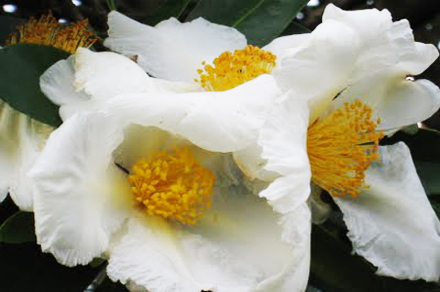 Sight is our most immediate physical sense. The kaleidoscope of colour in our environment has an instant effect on how we feel and experience the world around us.
Sight is our most immediate physical sense. The kaleidoscope of colour in our environment has an instant effect on how we feel and experience the world around us.
Colour influences our thoughts, our actions, our health and even our relationships. Amazingly it has been noted by researchers that many colour energies are so powerful that even the visually impaired can sense their vibrations and recognize a colour by sensing the density of air that surrounds it.
Colour therapy is an ancient approach to healing that has been used since the earliest times. The aim is to restore harmony and stimulate our inner resources. Colours can profoundly affect our mood and often have a measurable effect on our emotional and physical behaviour.
So how can we incorporate colour therapy into garden design? Each colour has many meanings and effects and can heal a wide variety of conditions. The usual rules of garden design still apply though and the scale and size of the garden, colours of the house materials and location are still a major consideration. Of course it is not only flowers that can provide colour in the garden. Plant foliage, furniture, garden pots and accessories are also a rich source of colour to play around with.
Red is the colour of love and fertility and is a great energizer. It keeps you alert, helps you cope with the demands of life, removes negativity and provides courage. Red is the boldest and most eye catching colour in the garden, providing vibrancy and making areas seem smaller than they really are, due to its advancing nature. Red has an ability to increase appetite so it is a great choice around eating areas or gardens visible from the inside dining area.
Orange is the colour of joy and provides a feeling of well-being by relieving the worries of everyday life. Orange is warm and welcoming, optimistic and sociable, it is bursting with energy and acts as a stimulant. Orange provokes change, creates opportunity and is the colour of enthusiasm and freedom. Orange is a great colour to lift us out of depression and instil a dose of optimism and fight our unknown fears. Orange is also a great colour to use around eating areas and an excellent choice for an area to enjoy a cup of tea in the morning sun.
Yellow is the brightest colour in the spectrum and is an excellent aid to concentration and study. Yellow energy provides intellectual and inspirational stimulation, encourages agility of mind, aids precision and helps to sort out difficulties. Yellow also brings feelings of optimism and self worth. Yellow is a powerful colour and will attract and dominate, drawing the eye toward it and increasing the feeling of space. Yellow will bring a feeling of well-being to the garden even on a dull day, evoking the spirit of spring.
Green is the colour of nature, a balanced hue which is neither warming nor cooling and brings a sense of harmony in garden design. The greenness of young seedlings represents regeneration and fertility. Green is believed to bring about change, create new routes in life and encourage hope. Restful and relaxing, it offers sanctuary from the outside world and spreads a feeling of peace. It is useful for meditation as it encourages a purposeful state of mind. In the garden, in all its myriad hues, green appears to enlarge space and will have a calming influence. Green enhances appetite, allays anxiety and brings a sense of peace and well-being.
Blue encourages relaxation and tranquility in garden design. It is a good colour for contemplation and is very conducive for meditation, inspiring patience and calm thought. Blue makes you aware of the need for rest and denotes a desire for peace and order. Blue is a cold hue and has a cooling and cleansing effect which quiets the mind and soul. Exposure to blue can reduce blood pressure, pulse rate and brain activity. Blue is the perfect colour to reduce stress and anxiety in our busy lives and will reduce insomnia and help to combat nervousness, tension or fear. Blue reminds us of clear skies and creates a feeling of spaciousness.
Violet is a rich, regal colour which has been used throughout the ages to indicate knowledge, self respect, spirituality, nostalgia, dignity and wealth. Violet brings feelings of self-worth and is a good colour to use if you need to learn to love yourself. Violet is a difficult colour to use in garden design and needs plenty of contrast in texture, form and tone. For example Lavender has beautifully contrasting silvery foliage as a foil and many violet flowers have striking, contrasting centres such as the climber Clematis.
So now that we are armed with an insight into the effect of colour therapy in garden design we can manipulate space, form, colour and light in our gardens. We can create wonderful swathes of soothing singular colour, lifted by textural interest or mass plantings of complimentary colours. For example blue and orange stimulate the eye and make each colour appear even more intense than it would if set against any other colour in the spectrum. We can calm our nerves in quiet spots in the garden designed for relaxing with blues, greens and neutral whites, or turbo charge our eating areas with vibrant reds and oranges.
Colour is an integral part of our lives and its positive effects on our well-being in a well designed garden are immeasurable. So what are you waiting for? Its time to start re-evaluating your garden as a rich source of healing energy.
Reference
Healing Gardens, Romy Rawlings
















